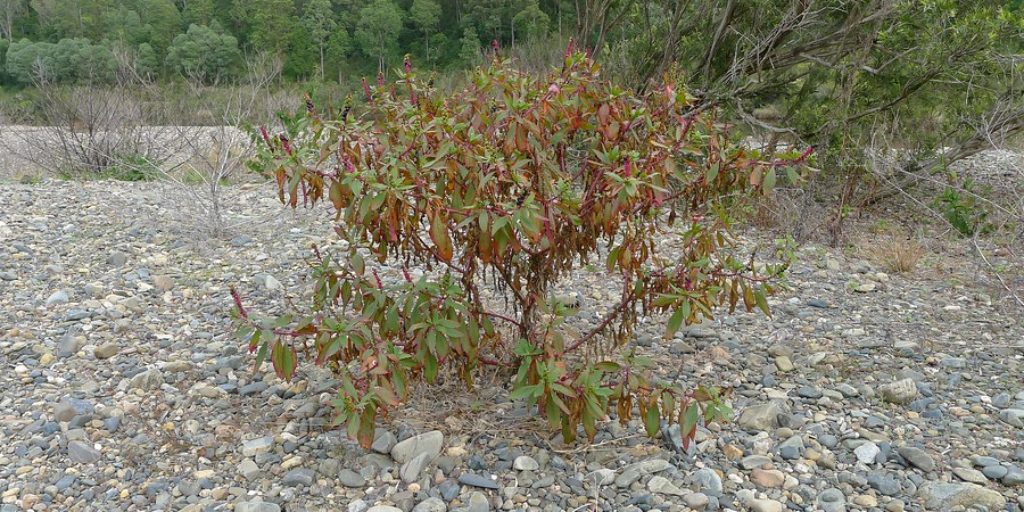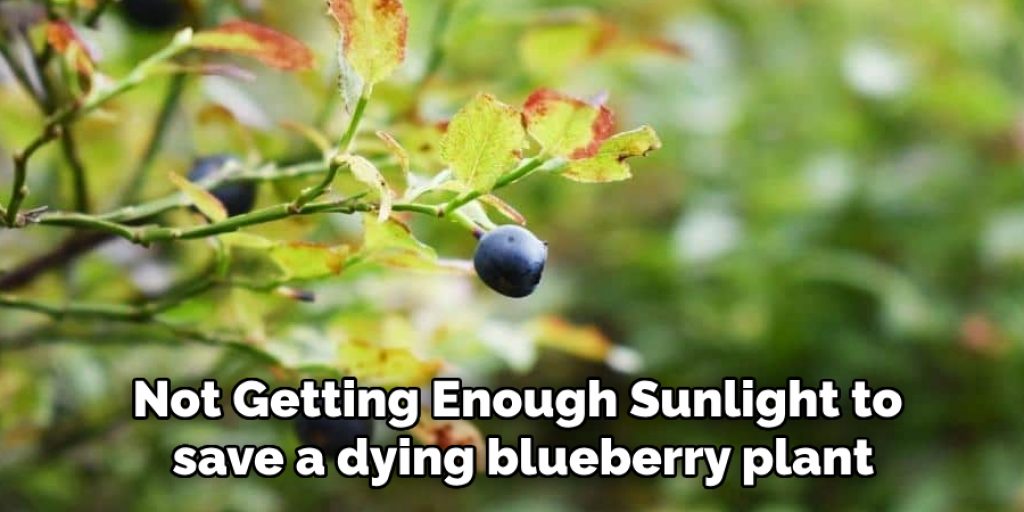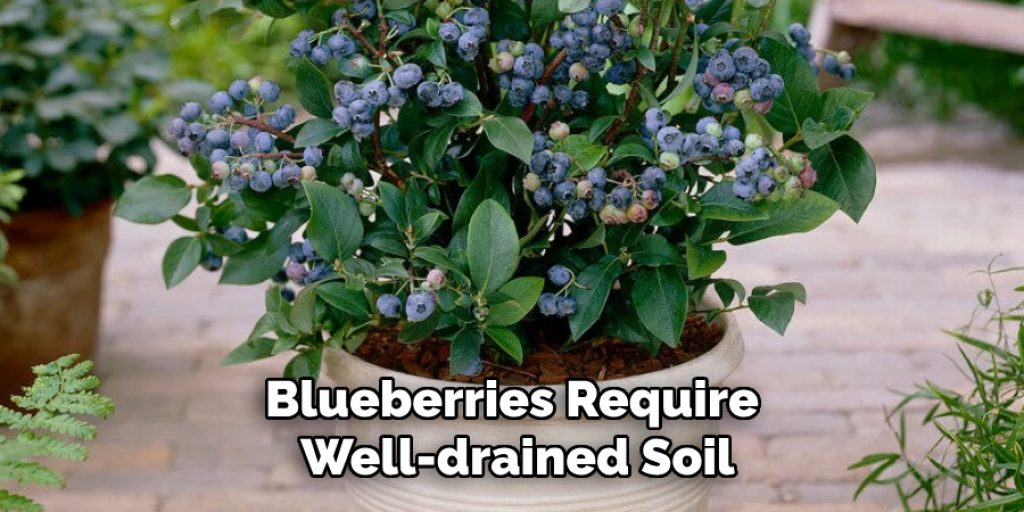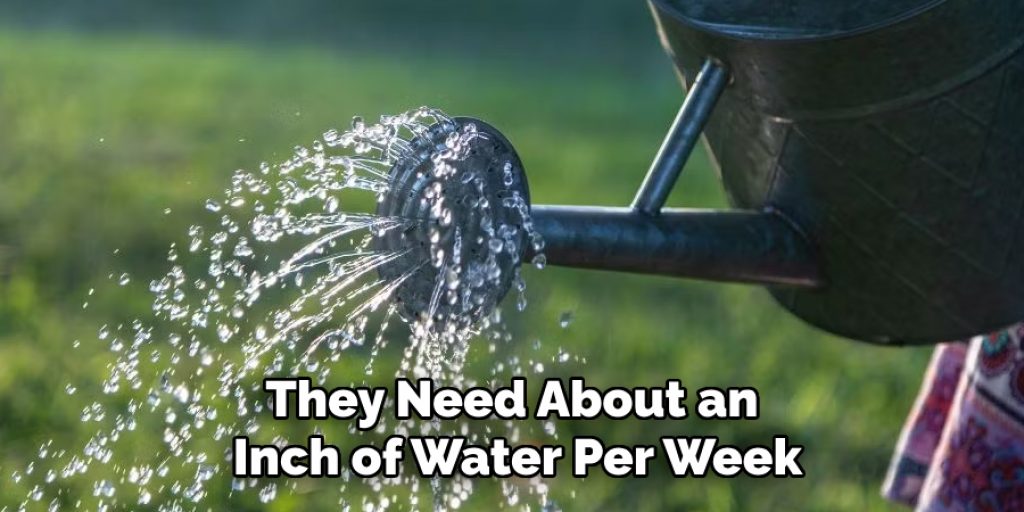How to Save a Dying Blueberry Plant
Blueberry plants are notoriously difficult to grow, but they can thrive with the proper care and attention. This article will teach you how to save a dying blueberry plant. There are many reasons why your blueberry plant could be dying, but there are also things that you can do to help it survive.
You may have forgotten about watering or fertilizing the plant, or maybe it is too cold for the plant in your location. Whatever the reason, this article will give you some tips on what to do if your blueberry plant starts looking sickly and preparing for death.

Reasons Why Your Blueberry Plant is Dying:
1) Blueberry Plant is Prone to Disease
Although blueberries are delicate, fungi, bacteria, and viruses can cause them harm. The most common diseases that affect blueberry plants are Verticillium Wilt, Phytophthora Root Rot/Blossom End Rot, Anthracnose Fruit Rot, and Botrytis Blight. However, you can consult your local county extension office for control measures to save your blueberry plant.
2) Improper Blueberry Planting
Blueberries require a slightly acidic soil pH in the range of 4.8-5.3 and do not grow well in areas where water drainage is poor or soils are poorly aerated and compacted. Do not plant blueberry plants where tomatoes, potatoes, eggplants, peppers, or rhododendrons have been grown in the past three years.
3) Root Injury
Blueberry roots may be damaged by machinery and hand tools during land clearing operations, digging holes for transplanting, or cultivating around blueberry plants. Rake soil away from the base of transplants to prevent root injury during cultivation.
4) Excess Water
Water-saturated soils will induce root rot and suffocate the plant. Blueberries are heavy mulch plants in wet soils and raised beds to allow for more excellent drainage.
Drying out the earth by planting them in plain pots helps to remove excess moisture from their roots, preventing root rot. Irrigate established plants only during prolonged dry spells but never allow the soil to become waterlogged. Waterlogging results in poor aeration and root rot, which kills blueberry plants.
5) Wrong Blueberry Plant
Do not plant lowbush types where highbush types are more suitable or vice versa because growth characteristics will be drastically different across varieties. For example, highbush blueberries require a minimum of 6 hours of winter sun, whereas lowbush types require 8 hours of sun.
6) Not Getting Enough Sunlight

If your plant is not getting enough sunlight, it may begin to show signs of discoloration or weak growth. The higher the quality of sun your blueberries are receiving, the brighter their color will be. Look for a location with plenty of sun exposure and try some methods to increase sunlight if your plant is sick.
7) Insects
Insects can wreak havoc on a blueberry plant. Aphids, mealybugs, thrips, and scales suck the life from blueberries causing them to appear weak and faded. Handpick insects or use insecticidal soap to control these pests.
8) Wrong Soil
Blueberry plants do not grow well in poorly drained or compacted soils. If you suspect your soil may be too dense, break up the ground with a pitchfork and rake it smooth so there are no clumps larger than 1/2 inch in diameter. Then, dig holes for transplanting and filling with soil from the excavations with a pitchfork to aerate the root zone.
9) Overfertilization
Excessive fertilizer applications may lead to blueberry leaf burn. Blueberries require only light fertilization with an all-purpose fertilizer initially. After that, blueberries do not need supplemental fertilizers unless plants show signs of poor growth.
Apply fertilizer at the beginning of the growing season rather than in midsummer, when cooler temperatures will stimulate extra vegetative growth that is more susceptible to winter injury. Use very small amounts sparingly to avoid burning the plant’s roots.
10) Poor Soil Drainage

Blueberries require well-drained soil free of root-knot nematodes or fungi that causes poor growth and leaf discoloration. Blueberry plants grow best in raised beds with clay loam soil that is slightly acidic. If your soil is compacted, poorly drained, or has poor aeration, you can increase drainage and improve the soil with organic matter such as pine bark mulch.
Now that you know why the blueberry plant dies, it’s time to know the different ways to save it.
You Can Check It Out to Plant a 15 Gallon Tree
Ten Ways on How to Save a Dying Blueberry Plant:
1. Check for insects:
Often, the dying blueberry plant is dying because of an infestation of insects, such as aphids. Aphids are small green bugs that cluster on the leaves and stems.
They don’t damage blueberries when they are small, but large clusters can weaken or kill young plants by sucking out their sap. Remain these bugs with a cotton ball soaked in rubbing alcohol to remove them.
2. Re-potting:
If your blueberry plant is looking in need of re-potting, now would be a good time to do so.
Re-pot in a larger pot with well-draining soil. Blueberries prefer acidic soil, so if your garden does not have acidic soil, add a handful of peat moss to the bottom of the pot and then mix in garden loam with one-third sterilized compost before filling it about three-fourths full with the mixture.
3. Rooting Cuttings:
If the plant is severely rootbound, taking cuttings can help it re-establish healthy roots. To root cuttings, take a three-inch cutting from the tip of a stem with two to three sets of leaves and dip the bottom inch in rooting hormone before placing it in water until roots begin to grow.
Once the roots are about 1 inch long, plant the cutting in a pot with moist potting soil and keep it inside until all danger of frost has passed before planting it outdoors
4. Check for disease:

Blueberry plants are prone to several diseases, including anthracnose, powdery mildew, and verticillium wilt. These problems are often a result of a moist environment with poor air circulation and infected plant material.
To check for disease, take cuttings from healthy-looking areas on the plant that do not show signs of disease and place them in water until roots begin to grow before potting them as described above.
5. Fertilize:
Fertilizers high in potassium, phosphorus, and magnesium will promote new growth. To apply fertilizer, water the plant thoroughly first so that the soil will be damp enough to absorb it.
Then, sprinkle a teaspoonful of granular fertilizer for acid-loving plants around each plant and water it into the soil. Alternatively, dissolve a fertilized tablet in a gallon of water and pour it around the base of each plant.
6. Watering:
To keep blueberry plants from dying, they need about an inch of water per week. It is best to apply this amount gradually over three days instead of all at once, as this allows time for the water to penetrate through the soil.

You can check for this by pushing a metal stake into the ground next to the plant and placing a coffee cup on top of it. Water until water comes out of the bottom of the cup.
7. Reseason the soil:
Most blueberry plants are perennial, meaning they grow back every year. However, if you plant them in the same place, their fruit will be less tasty because of nutrient depletion in the soil.
To remedy this problem, apply a three-inch layer of compost over the area where your blueberries are grown. This addition should improve their flavor and increase the number of fruit.
8. Mulching:
Mulch your blueberry plants to conserve water and keep them healthy. Use organic mulches, such as wood chips or straws to decompose over time and provide nutrients for the soil. Spread a two-inch layer around each plant to promote good drainage and prevent weeds from growing.
9. Sunlight:
Blueberries need lots of sunlight to grow. If you have kept your plant in the shade, gradually introduce it to direct sunlight over a few days until it can stay outside all day. If needed, use stakes and string to support the branches once they begin bearing fruit so that they do not break from their weight.
10. Pruning:
Last but not least, blueberry plants need pruning to be healthy. Removing dead and diseased material allows the remaining branches to become stronger and healthier. Pruning of blueberry plants should be done in late winter or early spring before new growth begins.
Can You Revive a Dead Blueberry Plant?

Blueberry plants are economical for landscaping since they have few pest or disease problems, produce fruit quickly, and are easily maintained. Unfortunately, if a blueberry plant becomes ill or dies, it can be tricky to bring it back to life.
However, there’s still hope even if the leaves on your blueberry plant are yellowing or the plant looks wilted.
If your blueberry plant is already dead, it’s probably because the soil was too wet, the pH levels were too high, or you planted it in poor-draining ground.
To avoid these problems next time, spot treats any diseases with fungicides early on and use well-draining soil when planting blueberry bushes. Also, check the methods for saving a dying blueberry plant so that it’s easier for you to get familiar with the process.
Blueberry plants suffering from too much moisture in the soil will produce yellow leaves and an overall lack of vigor. It’s best to avoid overwatering blueberry bushes, but if you suspect your plant is suffering from overly wet soil, use an organic mulch around the base to help with weed control and allow for better drainage.
Conclusion:
You can save a dying blueberry plant by adding mulch to the soil and watering it regularly. For your blueberries to grow, you need ample amounts of water, sunlight, and nitrogen from organic compost or fertilizer.
If you feel like your blueberry bush is struggling with these three basic needs, consider applying some mulch around its roots.
The key thing about this process is patience; don’t be alarmed if there’s no immediate change because new growth usually takes between six months and one year! Remember, once your plants are flourishing after following these steps.
They should grow with ease after that initial growing period. We hope this blog post on how to save a dying blueberry plant has been helpful. Let us know if you have anything in mind!




